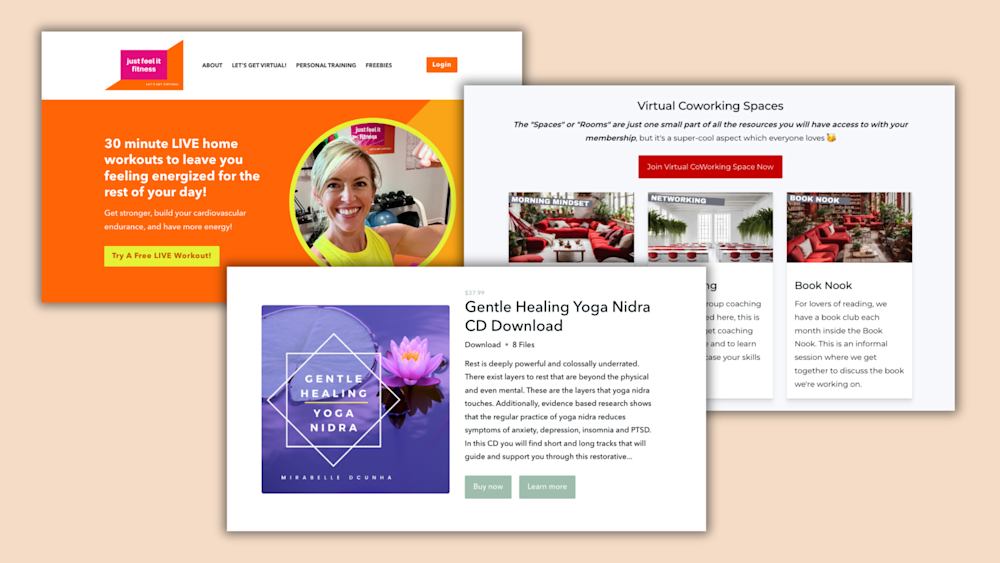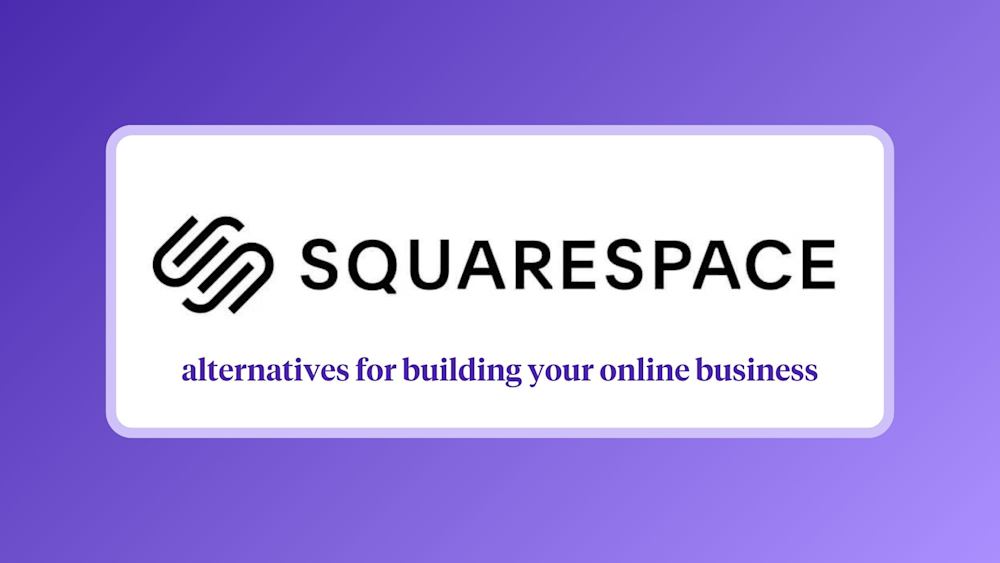You’re ready to monetize your audience and start reaping the benefits of being an entrepreneur.
There’s just one more question on your mind: Where do I start?
It’s not that there aren’t enough creator monetization options out there. It’s that there are too many to choose from, and every so-called expert has a different growth hack or secret that they swear will work for you, too.
We put together this guide to help you weed through the noise. We’ll walk through five of the most popular monetization options for creators, so you can choose the best method for you.
Let’s start with a classic: Advertising.
1. Advertising
If your blog or website is bringing in a steady flow of traffic, adding display ads might seem like an easy way to bring in some cash.
When you add advertising to your website through a platform like Google AdSense, you’re essentially renting out space on your site to advertisers.
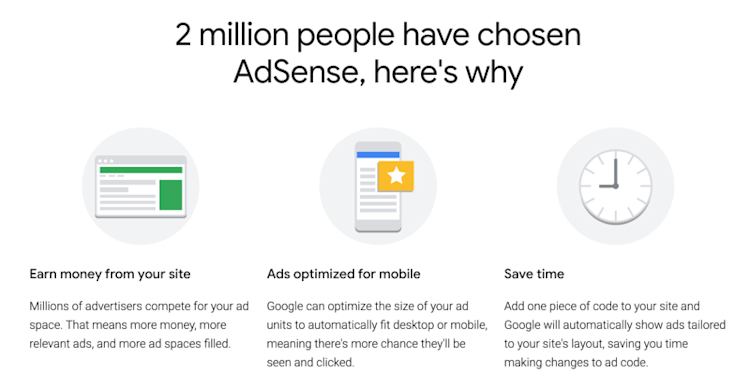
Google AdSense allows you to make money by displaying Google ads on your site. AdSense pays by counting two things:
-
Impressions: Every thousand page views on your blog.
-
Clicks: Every time someone clicks an ad on your site.
Once you reach an earnings threshold of $100, Google releases your payout.
It can take a while to hit that benchmark.
The earnings depend on many factors, including your site traffic, content, audience, and ad setup. But the average rate per thousand impressions (RPM) for content-rich sites like blogs is just $1-$10.
In other words, displaying ads on your site only has the power to boost your bottom line if you have the traffic to make it worthwhile.
For most creators, the level of traffic required just isn’t realistic. That’s doubly true if you’re working to bring in extra income through an online side-hustle.
That’s why we don’t recommend using AdSense to monetize your blog. But don’t worry — there are plenty of other ways for online creators to monetize their audience. Keep reading.
2. Video monetization on YouTube
You already create top-notch content for your social media channels, and you’ve built an audience on YouTube. Your vlogs, tutorials, and educational videos keep your subscribers hooked.
Judging by some of the top YouTubers, monetizing your YouTube videos is a straight shot to a major payday. Just check out these estimates from Forbes:
-
Jimmy Donaldson of Mr. Beast made $24 million with 3 billion views and 47.8 million subscribers.
-
Ryan Kaji of Ryan’s World brought in $29.5 million with over 12 billion views and 41.7 million subscribers.
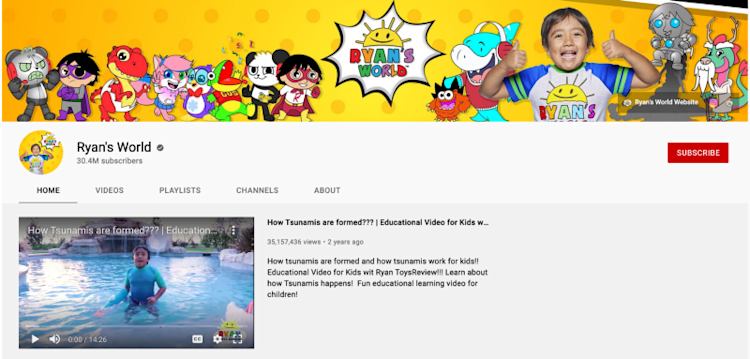
Unfortunately, Jimmy and Ryan’s payouts are far from the norm. Social media platforms like YouTube are making it harder than ever for video creators to monetize content creation, especially if you don’t have tens of millions of subscribers.
The YouTube Partner Program limits who can join the program based on your number of public watch hours and subscribers. But video views are heavily dependent on YouTube’s algorithm, which is out of creators’ control.
If you do make it into the program, YouTube takes a whopping 45% of each payout. YouTube creators also face strict channel monetization policies and community guidelines.
If that wasn’t enough, the platform has also been known to mistakenly demonetize creators’ YouTube channels without warning.
Phew.
It’s not all bad news for YouTube creators, though.
You can make money from your YouTube following and video content without joining the Partner Program.
Our next monetization strategy can also work for YouTubers looking to bring in some extra cash.
3. Affiliate marketing
YouTubers and bloggers alike can use affiliate marketing to monetize their audience.
Affiliate marketing is a performance-based digital marketing model. Brands
(a.k.a. merchants) pay affiliates to promote their products. Affiliates receive commission on every sale they make on behalf of the brand.
The affiliate marketing model is based on performance, so affiliates only receive payouts from completed sales. Their sales are usually tracked through cookies or dedicated links.
Affiliate marketing spend is expected to reach $8.2 billion by 2022, and it’s easy to get in on the action. If you have an online audience, you can become an affiliate marketer and start monetizing your blog.
All you need to do is join an affiliate program, link to outside products, and get a commission every time someone makes a purchase through that link.
One of the biggest perks of affiliate and influencer marketing is the opportunity to promote products and brands that match your values and niche. Your audience trusts your recommendations, so don’t tread carelessly with who you support.
Brands of all sizes and industries have affiliate programs, from ecommerce giants like Amazon Associates to smaller operations like Taylor Tieman's Legalmina Library affiliate program.

If you decide to become an affiliate, don’t forget to add an affiliate disclosure for content that includes affiliate links, like this one from Blogger Breakthrough:
“This page contains affiliate links, meaning if you click on them we will receive a small commission at no cost to you.”
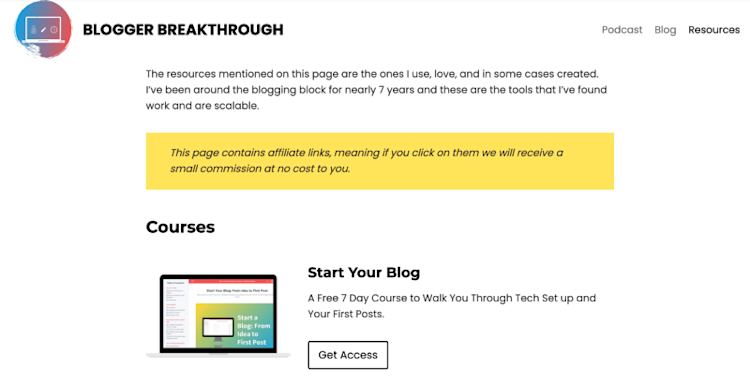
Affiliate disclosures are a great way to build and maintain trust with your audience — and they’re also required by the Federal Trade Commission (FTC).
Last but not least, while affiliate marketing can be a great way to make some extra money, we don’t recommend making it your main revenue stream.
If the terms of the affiliate program change, you could lose your source of income overnight. Instead, make it just one part of your monetization plan.
Now, let’s move on to our fourth way for creators to make money online.
4. Sponsorships and influencer marketing
Like affiliate marketing, sponsorships and influencer marketing deals also involve promoting a brand or product to your audience.
Instead of receiving a commission on every sale, the brand pays you for a set number of posts or mentions.
Sponsorships tend to be especially popular for creators looking to monetize their podcasts and YouTube videos, while influencer marketing focuses more on individuals with dedicated social media followings.
More and more brands are choosing influencer marketing over traditional advertising to reach their target audiences.
When you hear the word influencer, you may think of Kardashian-level celebrities. Often, though, influencers are simply experts or leaders in their niche.
They’re usually content creators with a targeted, engaged social media audience — sometimes even small ones — with specific interests in common.
Take Instagram influencer Kanoa Greene, for example. With just over 22,000 followers, Kanoa is considered a “micro-influencer”. But her fan base is engaged with and inspired by her posts. Kanoa has built a strong Instagram community — and the brand partnerships to match.
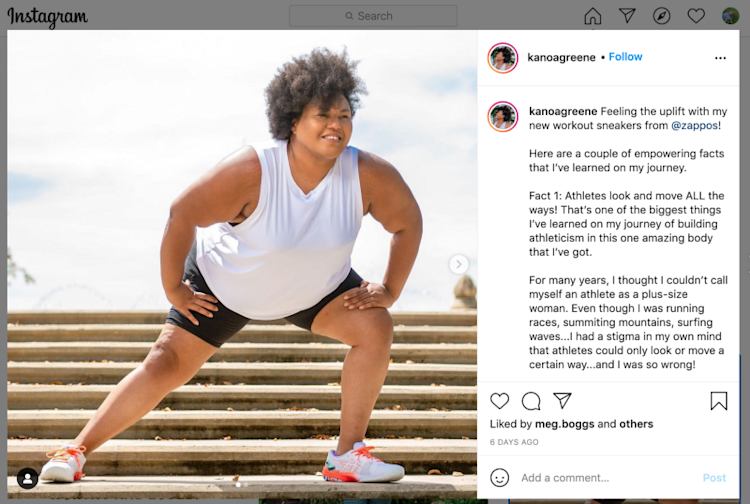
You don’t need a sky-high follower count to be an influencer. As long as you have a community and a niche, you can seek out brand sponsorships and influencer deals.
Lifestyle blogger and successful influencer Kaya Marriott explains:
As an influencer, keep in mind that you’ll need to consistently produce new content for your brand partnerships alongside your unsponsored content to keep your followers engaged. And sponsored posts can involve much more than snapping a product photo.
YouTube star and lifestyle influencer Lucie Fink told Forbes:
“Sometimes, [a sponsored post] involves telling [a brand] exactly where I’ll be taking the photo/video, what outfit I’m going to be wearing in it, how much or how little makeup will be on my face, what color my nails will be, or how the product will be featured in the content.”
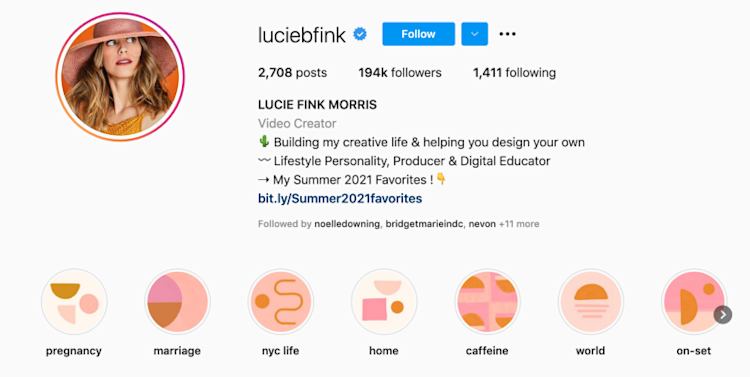
In other words, it’s not for the faint of heart (or short on time), especially if you don’t plan to make it a full-time gig.
Like affiliate marketing, make sure to let your audience know when you share sponsored content. This guide from the FTC outlines influencers’ responsibilities for disclosing paid endorsements.
You may have noticed that every monetization option we’ve covered so far involves relying on a third party, like an ad network, sponsor, or affiliate program. Are there options for creators who don’t want to depend on those external factors to make money online?
There sure are. In fact, that’s what our fifth and final monetization strategy is all about.
5. Selling digital products
At Podia, we’ve watched thousands of creators join the creator economy and earn their first online dollar.
They’re doing it by selling digital products like online courses, digital downloads, webinars, and membership communities. These are all products that let creators earn passive income without relying on sponsors or advertising.
Here’s an overview of two of the most profitable digital product ideas for creators: digital downloads and online courses.
Digital downloads
If you’re looking for something with low time commitment, consider selling digital downloads.
Some of the most popular types of digital downloads include:
-
Ebooks and guides
-
Customizable templates
-
Graphics, illustrations, and digital art
-
Video tutorials and webinar recordings
-
Printables, like calendars, cards, and checklists
For example, if you help people learn how to manage their money, a monthly budget worksheet would make an excellent digital download. On the other hand, if your goal is to help your audience with personal development, you could sell a workbook of journaling prompts.
That’s what entrepreneur and mindset coach Becky Mollenkamp does with her Gutsy Guide to Journaling.

You don’t need to be a professional designer to create a beautiful digital download. You can repurpose your blog content into an ebook or turn a how-to video into a printable checklist.
Free tools like Venngage and Canva also offer templates for all kinds of downloads.
For more digital download tips and tricks, check out these guides:
Online courses
The self-paced e-learning market is expected to grow by over six billion USD by 2024. That’s a big opportunity for creators who have insight and expertise to share.
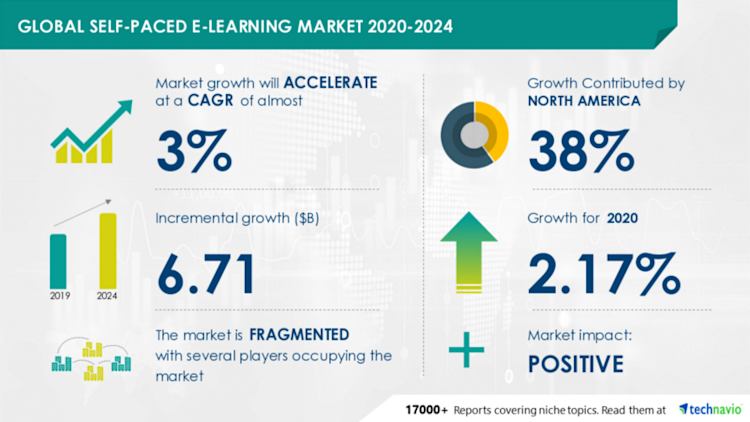
Take entrepreneur and web design pro John D. Saunders, for example.
When he launched his online course on Podia, John earned $10,000 on launch day and $100,000 overall from his Podia site.
“Passive income isn’t really passive in the beginning, because you do have to create this infrastructure and this infinite pipeline to keep things consistent and going,“ John told us.
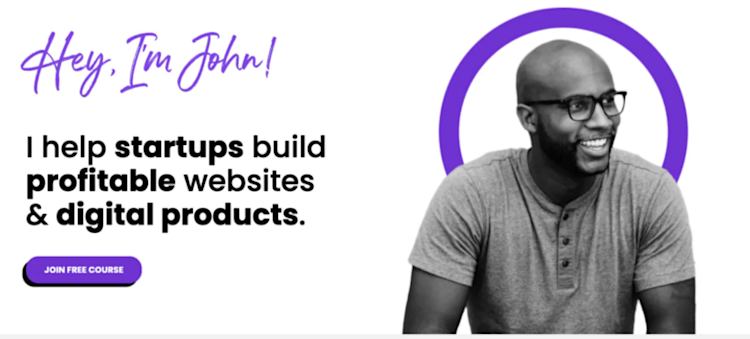
But once you create an online course, the bulk of the work is out of the way, and you can start earning passive income by selling your course.
“While I’m sleeping, I’m making income. While I’m out at the park with my family, I’m getting sales. Podia lets you have a different type of income that’s not tied to your time.”
(Podia makes it easy for creators like John to create, launch, and sell digital products from one dashboard. Sign up for your 30-day free trial of Podia today.)
Creating an ecourse from scratch may seem daunting, but if you’re already producing quality content for your audience, you’re well on your way. For example, you can repurpose your video content by turning your YouTube tutorials into an online course.
Bottom line:
Whether you launch an online course or monetize your blog with ebooks, selling digital products lets you turn your passions into profit and make money on your own terms.
Making money online is right around the corner
At the end of the day, there’s no one-size-fits-all monetization strategy for online creators. You know your values, brand, and audience best. Trust your gut and know that it’s okay to try out different methods before you find the right mix.
To recap, here are five of the most popular monetization options for online creators:
-
Advertising is a classic, but unless you’re bringing in thousands of visitors every day, it’s hard to turn it into regular income.
-
For the biggest YouTube superstars, the YouTube Partner Program can bring in millions of dollars annually. For smaller creators, there are better ways to monetize your video content.
-
Joining affiliate programs can bring in extra income, but you’re beholden to guidelines and commission structures that are outside of your control.
-
Sponsorships and influencer marketing are great opportunities for creators to partner with brands they love. And contrary to popular belief, you don’t need millions of followers to be an influencer.
-
Selling digital products lets you monetize your audience and content on your own terms. Whether you sell digital downloads, create an online course, or start a membership community, you can turn your expertise into income.
With all of this info under your belt, you’re ready to take the next step toward building your business. We can’t wait to watch you grow, and if you're looking for a platform that makes the journey even easier, grab your 30-day free trial of Podia today!


